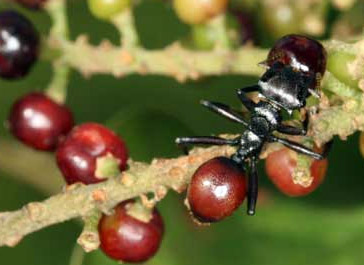I did not expect everyone to nearly instantaneously solve yesterday’s termite ball mystery. I’m either going to have to post more difficult challenges (from now on, nothing will be in focus!) or attract a slower class of reader.

Cuckoo fungus grows in a termite nest.
As you surmised, those little orange balls are an egg-mimicking fungus. It is related to free-living soil fungi, but this one has adopted a novel growth form that is similar in diameter, texture, and surface chemistry to the eggs of Reticulitermes termites. These hardened sclerotia are carried about the termite nest as if they were the termite’s own offspring, earning them the title “Cuckoo fungus”. Since termites are blind there is no advantage to the fungus in visually looking like an egg, though, so we sighted creatures can tell the difference at a glance.
For more about the Cuckoo fungus, check out the publications of Kenji Matsuura. Matsuura first identified the balls as a fungus ten years ago, as a graduate student, and has been working on them ever since.

Termites can't tell the difference between their own eggs (white) and the fungal sclerotia (orange).
Read Full Post »
 You may remember Wesley Fleming, the glass artist I blogged about last year. It seems he’s accomplished a remarkable new piece: a leafcutter ant infected with a parasitic Cordyceps fungus. As far as I know this is the first Cordyceps ever created from glass.
You may remember Wesley Fleming, the glass artist I blogged about last year. It seems he’s accomplished a remarkable new piece: a leafcutter ant infected with a parasitic Cordyceps fungus. As far as I know this is the first Cordyceps ever created from glass.
















